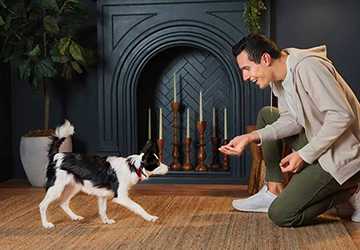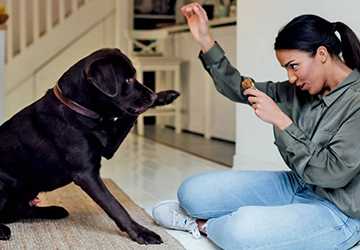Calling a dog for you when vital is an essential dog training skill that may save the pet and help you form a stronger connection. Whether you have a long day at home or an outdoor walk, getting your crochet companion to respond to you with just one cue instantly is highly precious. This article provides guidelines on the six main approaches in training your dog to return when ordered, such as teaching the command in the house and considering all the surroundings where the call is practised.
Start Indoors
Commencing the training process indoors is a gradual approach. You introduce your dog to the sense of someone calling it home. At the start, find a place close to you with minimal or no distractions, near and close to where you are most comfortable, and integrate it into the surrounding environment.

With significant amounts of patience and tasty treats that make your dog so successful, make sure you make every step of the training process fun for them. Commence by cheerfully indicating your pet's name, then say "Come!" in an optimistic voice. As soon as your dog approaches you, tell it how good it has done it, and now give it something to eat as a reward.
Use Positive Reinforcement
Dogs have always been effective in following directions that use positive reinforcement. So, make your coming when you call a pleasant activity. Every time your pet hears you from a distance, hurry to your pet and treat them with love, affection, and a cookie. The reinforcement of this positive association will make them reproduce the act. Be pleasant to your dog even if they are not coming immediately rather than scolding or punishing them since it may create fear or lead them astray.
Practice in Different Environments
Practising in different situations is a must to let your dog withstand any environment so that the "come" command can always be followed. Start in a quiet, low-distraction area like your backyard, where your dog is secure and relaxed. First, create a positive and calming environment to help your dog gain confidence. Start with basic commands in your backyard or a quiet room before adding complexity as your dog masters the basics. For example, go to a local park or a busy street where having your pet with you will be the most useful.
Use a Long Line
A long line is a handy way of getting the dog to follow the voice command since, in open fields, she may step off the sniffer. Hang a long leash (15-30 ft) from your dog's collar and let them discover things as they go. When you call for your dog, bring the reel to a gentle movement to draw the dog to you. Remember that regularly praising them when they behave accordingly is necessary.
Be Consistent
Consistency is critical to giving your dog a clear picture of what you want from them. Keep the tone of voice the same ("come") so your dog gets a clear and precise message. The household must use a consistent command system and rewards to shape the preferred behaviour.
Set aside time daily for a session to ensure consistency and give the dog prior knowledge of the command. This repeated habit helps the dog pick up the behaviour and ensures he responds similarly at home and outdoors.
Avoid Negative Associations
In training, you must cultivate a positive environment so the dog will have a good experience that encourages him to return. It would help if you stopped commanding your dog to do activities they hate, such as grooming or going to the vet. Instead, you can summon them to activities they like, like playing or walking. This way, you teach your dog to respond positively when called on command and associate it with a positive experience, which will further reinforce their handler's willingness.
Use High-Value Rewards
Along with daily treats, throw in the occasional super-duper reward they would drool over. During training sessions, do the same! Such leftovers could be bits of cheese or chicken you cooked or an item your dog likes playing with. From that point on, approach the types of rewards you use during training only so that they make training sessions even more intense.

Practice Recall Games
Deliver little play exercises during procedures to set a gaming mood. Likewise, try playing hide-and-seek indoors, where you hide behind the furniture or under the trees outside the house and call the dog out to search for you. When they are successful, even when they locate you, you should reward them with praise and treats.
Another alternative is to invite your brother or sister or any of the family members to be responsible for joining you in the dog recall. They will go back and forth, calling the dog. Having entertaining and practical training sessions will make the process fun and help you form an even more profound connection with your dog than before. You can also teach the dog to recall.
Conclusion
Therefore, teaching the dog to come to you when you say it involves patience, constant repetition, and the same result. Using the methods stated in this article, you can teach your dog, a theatre commander, these indispensable skills and enjoy the treats of a peaceful and disciplined companion. Celebrate your dog's accomplishments in the training process, and understand that bonding with your loyal canine pal in the training sessions will be a valuable experience for both of you.















